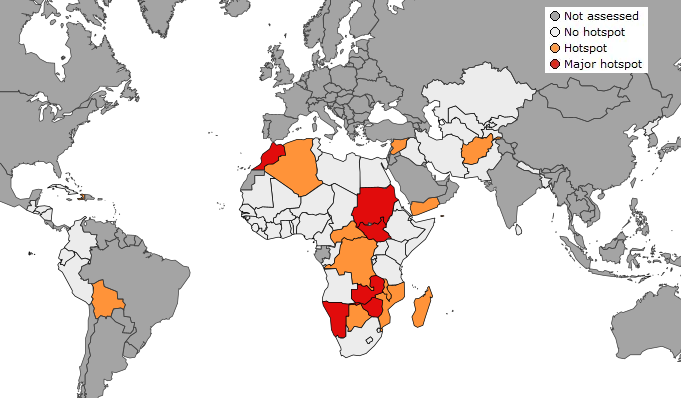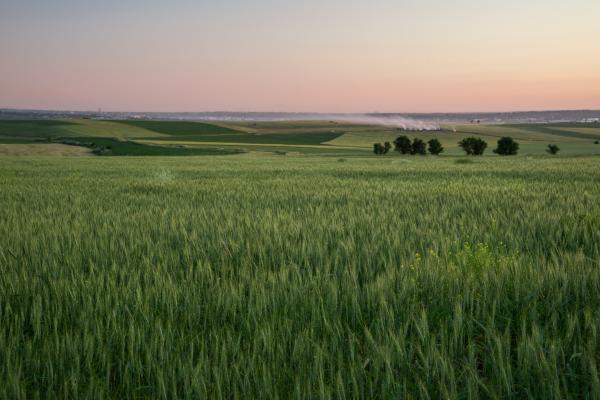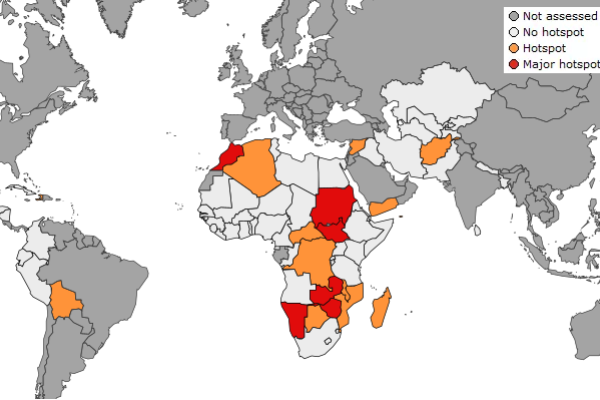
Main findings of the March global overview:
- In Southern Africa, the main cereal season is progressing across the region under poor conditions, and harvest is expected to start in April. Record dryness in February and high temperatures resulted in severe moisture stress in central and southern Zambia, southern Malawi, central Mozambique, northern Zimbabwe, north-eastern Botswana and north-eastern Namibia. The governments of Zambia, Zimbabwe and Malawi have already declared states of emergency due to drought. The persistent drought has also worsened rangeland conditions in Namibia, in northern Botswana, in most parts of Zambia and in Zimbabwe.
- The southern part of East Africa has experienced a delay in rainfall onset and high temperatures in March. Vegetation greenness is still above average, and seasonal weather forecasts agree in predicting wetter-than-average conditions in the rainy season (April–June). The conflict in Sudan worsened significantly in March, increasing the numbers of internally displaced people and the acutely food-insecure population. Levels of acute food insecurity have improved in Kenya and slightly in Uganda (in Karamoja), whereas they have worsened in Somalia and Sudan. In addition, the need for humanitarian assistance remains high in Ethiopia and South Sudan.
- In North Africa, towards the end of the winter season, the impact of drought on crops was confirmed in Morocco and western Algeria. Here, mean yield expectations were clearly below average. Central and eastern Algeria have experienced better rainfall conditions since December 2023, leading to close-to-average crop conditions. Pastoral areas in central Algeria were also exposed to drought stress and high temperatures in January and early February.
- In West and central Africa, with the onset of seasonal rains in March, land preparation and sowing activities for the first maize season are starting in the southern bimodal parts of the region, along the coast of the Gulf of Guinea. Rainfall conditions were average in March across the region. In Sahelian countries, planting activities were expected to start in April in southern areas. The Copernicus C3S multimodel seasonal rainfall forecast for April–May 2024 indicates average to above-average rainfall in most parts of the region.
- In the Middle East, prospects for winter cereals are favourable, except in the south of Iraq (in Qadissiya and Babil) and the south of Iran (in Fars and Bushehr). In Yemen, the harvest of irrigated wheat is under way in the central highlands, with favourable prospects; however, food insecurity continues to affect 17 million out of the 30 million people because of the conflict and the poor socioeconomic conditions in the region.
- In Central Asia, biomass conditions of winter cereals are mixed: they are below average in Turkmenistan and close to average in Tajikistan and Uzbekistan. In Afghanistan, the conditions of winter cereals are also mixed. In South Asia, the harvest of irrigated rabi crops and main-season maha rice is under way, with favourable prospects in Pakistan and Sri Lanka respectively. In Bangladesh, prospects are favourable for dry-season boro rice, to be harvested from April.
- In continental South-East Asia, the harvest of dry-season rice has started or is about to start, with favourable prospects. In Indonesia, the harvest of wet-season rice is under way, with favourable prospects.
- In Latin America and the Caribbean islands, the apante cycles of maize and beans concluded with overall favourable prospects. In Bolivia, the fact that poor or very poor vegetation conditions have been observed in the main grain-producing department of Santa Cruz is particularly worrying. Ongoing rice and maize cycles in Cuba, Ecuador, Haiti and Peru have continued to benefit from adequate water availability.
The next assessment is scheduled for the end of April 2024.
Details
- Publication date
- 12 April 2024
- Author
- Joint Research Centre
- JRC portfolios




